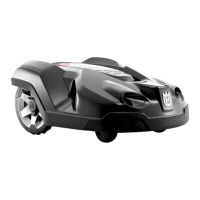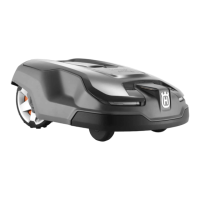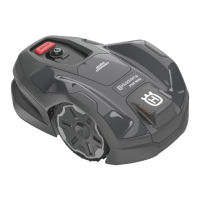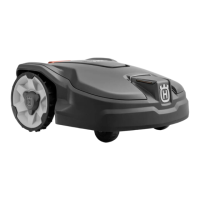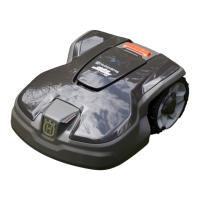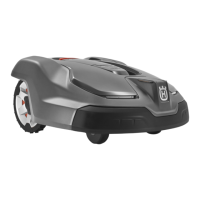the charging plate installation must be replaced. Refer to
To replace the charging plates on page 28
.
1. Remove the top cover. Refer to
To remove and
install the top cover on page 18
.
2. Remove the body. Refer to
To remove and install
the body on page 18
.
3. Remove the upper chassis. Refer to
To remove and
install the upper chassis on page 19
.
4. Disconnect the cable.
5. Remove the screw and the clamp holding the front
sensor circuit board.
6. Pull up the front sensor circuit board.
7. Install in opposite sequence.
6.13.6 To replace the rear sensor circuit board
1. Remove the top cover. Refer to
To remove and
install the top cover on page 18
.
2. Remove the body. Refer to
To remove and install
the body on page 18
.
3. Remove the upper chassis. Refer to
To remove and
install the upper chassis on page 19
.
4. Disconnect the cable from the rear sensor circuit
board.
5. Remove the 2 screws that holds the clamp.
6. Push to detach the 2 clips and pull up.
7. Pull up the circuit board.
8. Install in the opposite sequence.
6.13.7 To replace the tilt sensor
The tilt sensor is integrated in the main circuit board.
The sensor cannot be replaced separately. The main
circuit board must be replaced as one unit. Refer to
To
replace the main circuit board on page 23
.
6.14 The battery system
WARNING: Use only original batteries
recommended by the manufacturer. Product
safety cannot be guaranteed with other
batteries. Do not use non-rechargeable
batteries.
The battery is considered to be fully charged when the
battery reaches 80% of the total capacity. To charge the
battery to 100% would take too long since the charging
current is low. The most rational way of using Li-ion
batteries is therefore to stop charging at 80%. The
maximum utilised capacity is thus 80% of the battery’s
total capacity.
The battery is maintenance-free, but has a limited life
span. The battery is expected to last for 3000 - 4000
charging cycles. The normal charging current is 1.3 A.
1414 - 001 - Repair instructions- 27

